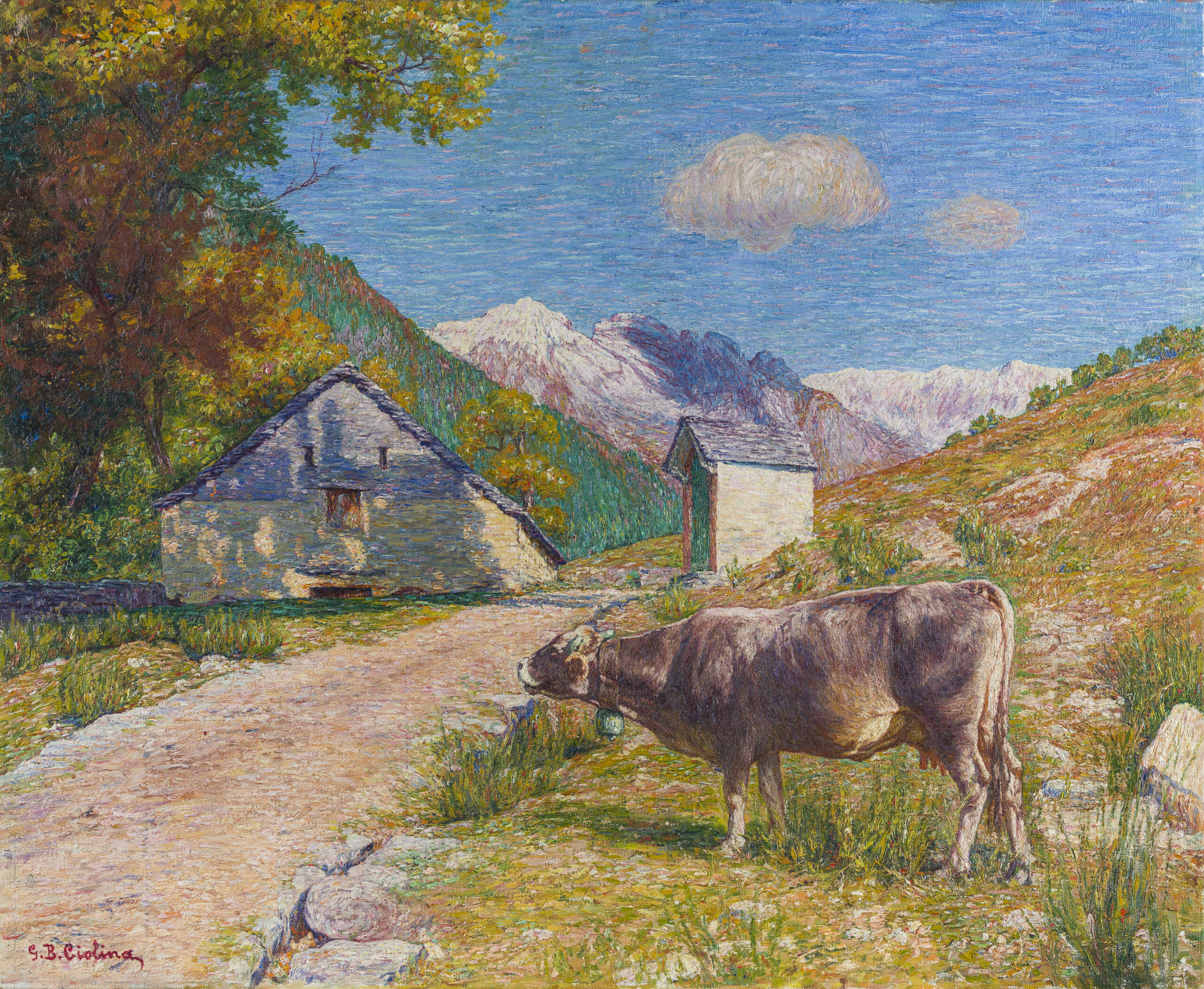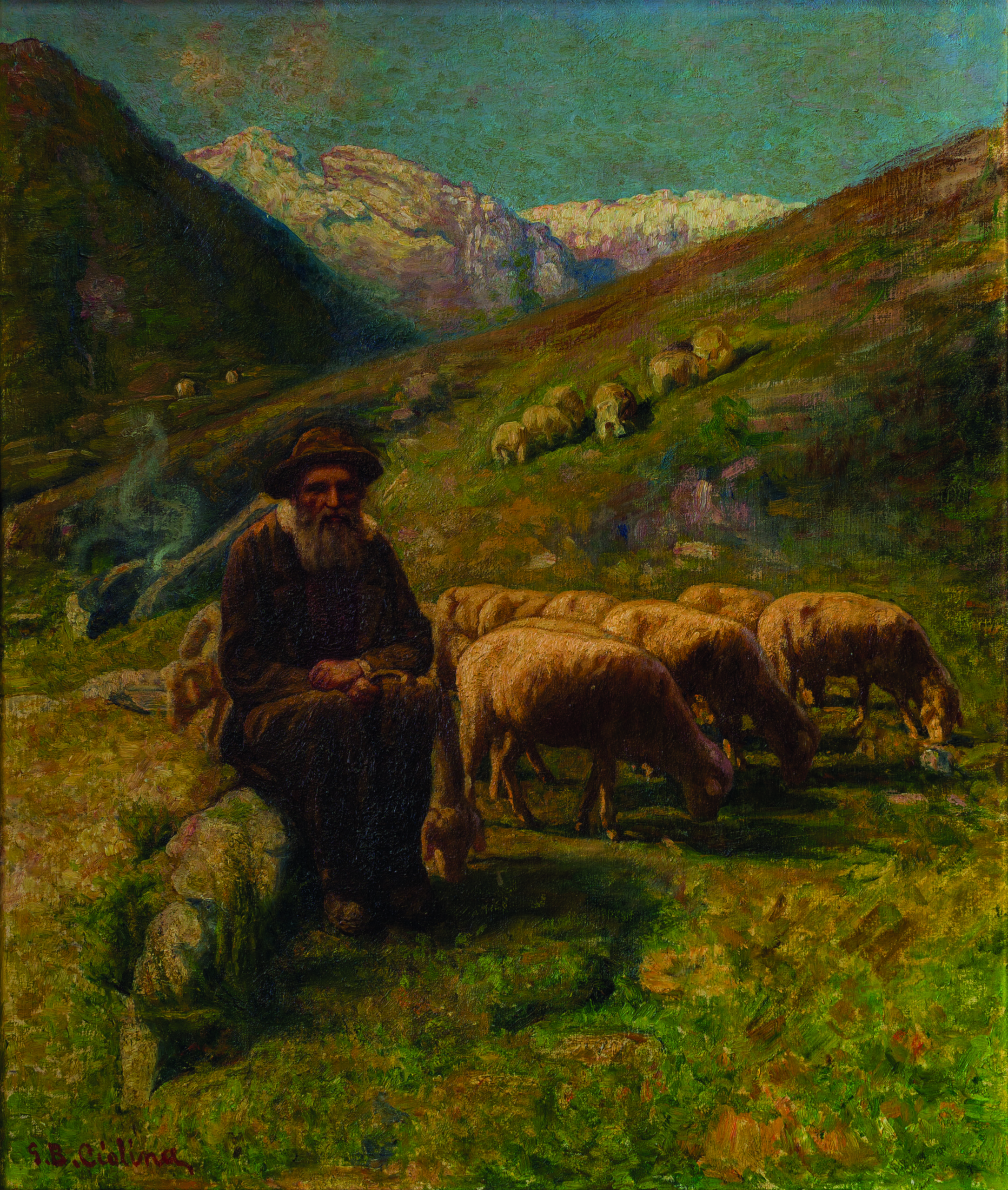I grasped this free approach of not merely copying the truth as it appears to our eyes or insisting that a painting be created solely and entirely from direct observation, a long time ago. Instead, one should use all means possible, through inspiration, sketches, photographs, and countless other things, as long as the final paintings achieve the right impression, the sensation that conveys the truth. The powerful execution, which is hugely important to me, has a freer field in one’s own imagination, in the impressions one experiences, so it is more rational that they are better expressed by indulging rather than repressing them. (…) In addition to truthfully representing things in themselves, in their materiality and their environments, I want to delve into and penetrate the mass and character of figures, animals, and even the whole of nature, physiologically and psychologically.
July 1896-June 1897. Giovanni Battista Ciolina’s diaries. Transcribed by Paolo Ciolina


CRITICAL ANALYSIS
There is no doubt that Mucca che pascola al “Camp Grand” (Cow Grazing at “Camp Grand”) is closely related to Il ritorno dall’Alpe (The Return from the Mountain). In fact, among the photographic plates taken by Giovanni Battista Ciolina and preserved by his son Paolo, donated in 1986 to the Museo del Paesaggio in Verbania, most were taken by Ciolina himself to work on the large canvas for the engineer, Giovanni Battista Caproni. Among them, there is one that exactly reproduces the framing of this not-so-small canvas, with the exception of the cow in the foreground. The cow was inserted by Ciolina according to a practice he employed to ‘animate’ his landscapes (as he did, for example, with his two children in Bambini che cercano grilli (Children Searching for Crickets – tappa 8). Not so much in the belief that they would appear more balanced, but rather due to his typical construction of scenes in layers, which was essential to give depth that might be somewhat weak and insufficient if relying solely on the perspective of the road. The technique of minute brushstrokes, along with the dense fabric of chromatic filaments in both primary and secondary colours used on a large part of the canvas, make this artwork one of the closest to the divisionist technique, albeit with a personal interpretation. This technique is mainly adopted to bestow the representation with a dazzling brilliance reminiscent of a bright summer afternoon, through the vibration of colour. It manages to light up even the purple shadows on the tree and the façade of the mountain hut, as well as the cloud on the Scheggia peak. The aqua green of the dense pine forest on the mountain slope behind the hut and inside the little chapel is incredibly effective, if a little unnatural. It is a colour that Ciolina also used in other works, a green that, combined with the dominant complementary pink-purple hue, which can even be seen on the glossy coat of the cow in the foreground (and note how Ciolina uses the same green to paint the horns and the cowbell!), makes the chromatic brilliance shimmer with an effect more real than reality itself.
The technique used in Vecchio pastore (Elderly Shepherd) is completely different, and much closer to that of Pecore al pascolo a Crana (Sheep Grazing in Crana – tappa 1), even in the backlighting that illuminates the backs of the sheep behind the old man sitting on the rock. The brushstrokes are broader, softer and more textured. Along with the warm, dominant light of the encroaching sunset, which Ciolina achieves by avoiding complementary colour pairings (except in the shaded, snowy faces of the Scheggia peak, but with duller tones), they give a serenity to the scene that borders on the melancholy. Even the aqua green in Mucca che pascola al “Camp Grand” is greatly toned down here and is only found in the unsettling serpentine bush behind the old man. This character is both venerable and archaic, reminiscent in terms of mass and position of the woman with the basket in Mestizia Crepuscolare (Twilight Melancholy – tappa 3), although in a completely different context. His role is more than symbolic; it is constructive for spatial rendering. With the portion of his flock in shadow beside him, it weaves through the entire succession of elements, alternately in light and shadow, in a solution that Ciolina uses to add depth, as we have seen him do before.
In my opinion, it cannot be dated beyond the first decade of the 1900s.
Text and image research and adaptation by Chiara Besana.
Critical analysis by Paolo Volorio.
Sign up to receive news on events, exhibitions and trainings from the Rossetti Valentini School of Fine Arts Foundation.
Iscriviti per ricevere le news su eventi, mostre, incontri di formazione organizzati dalla Fondazione Scuola di Belle Arti Rossetti Valentini.